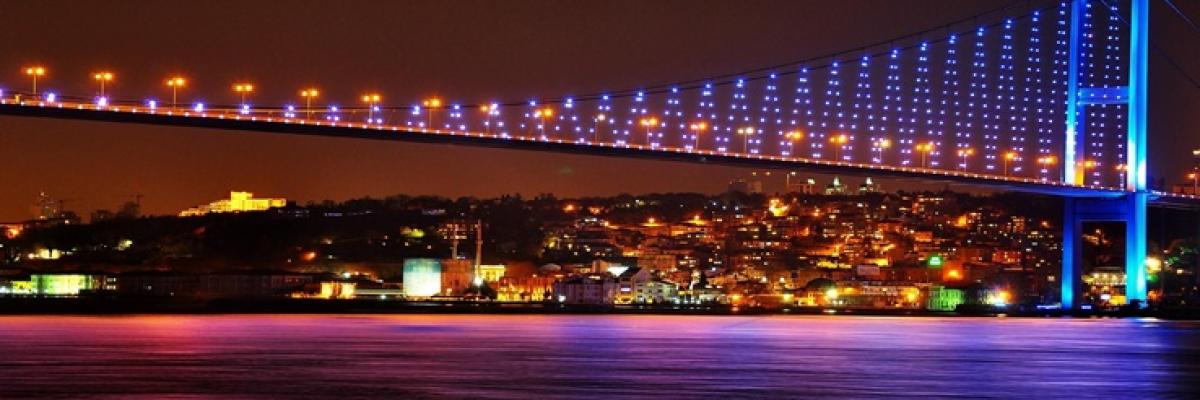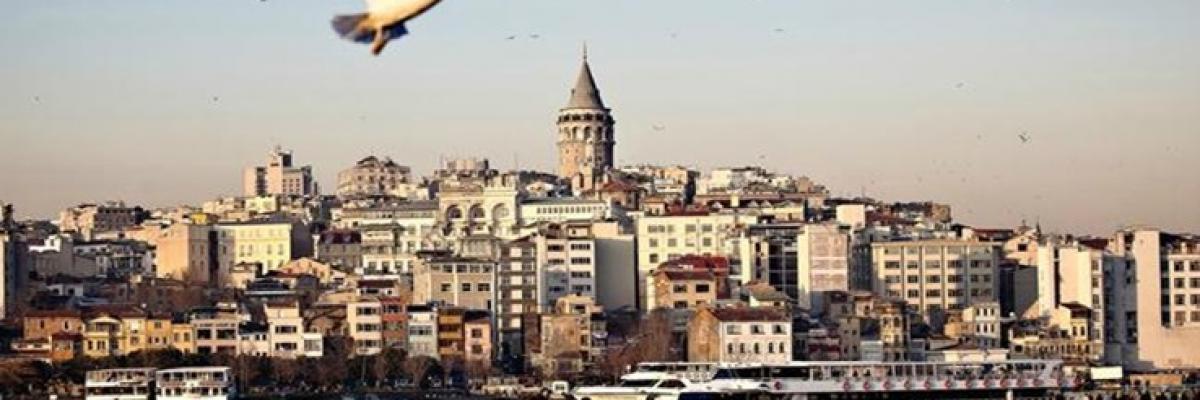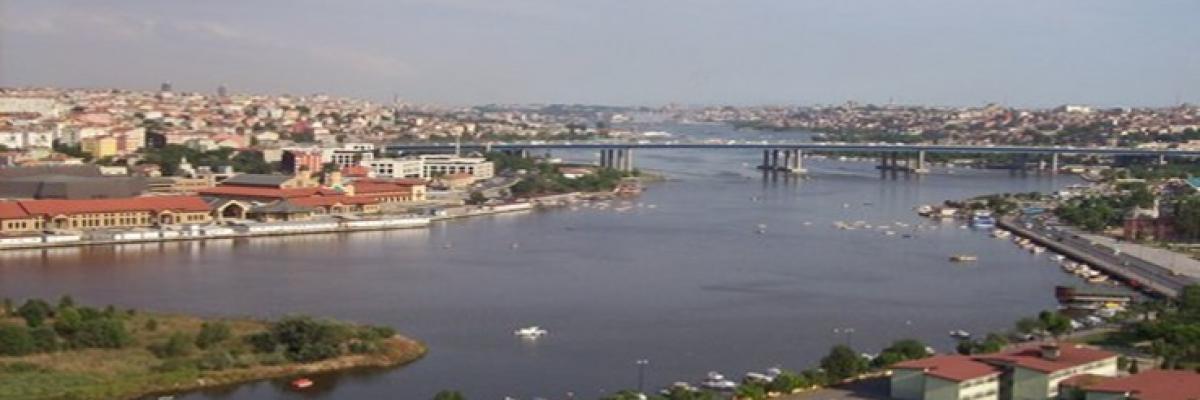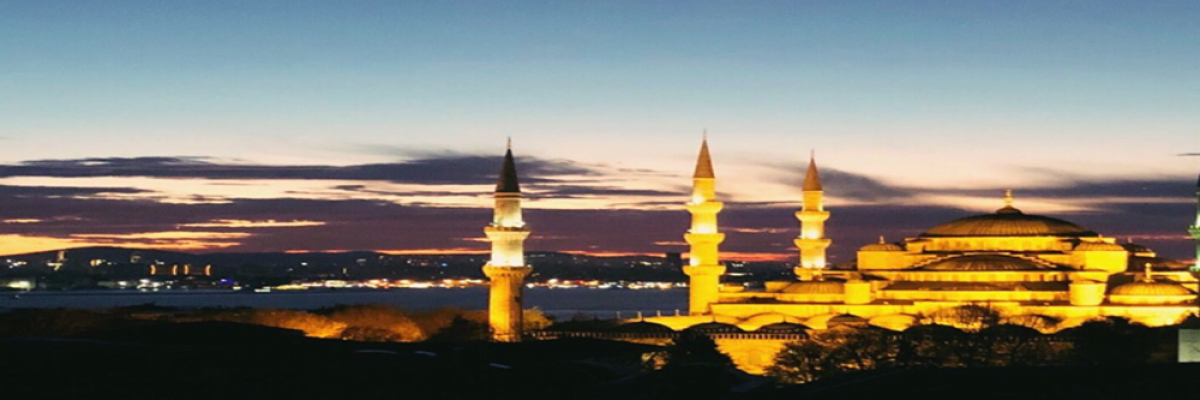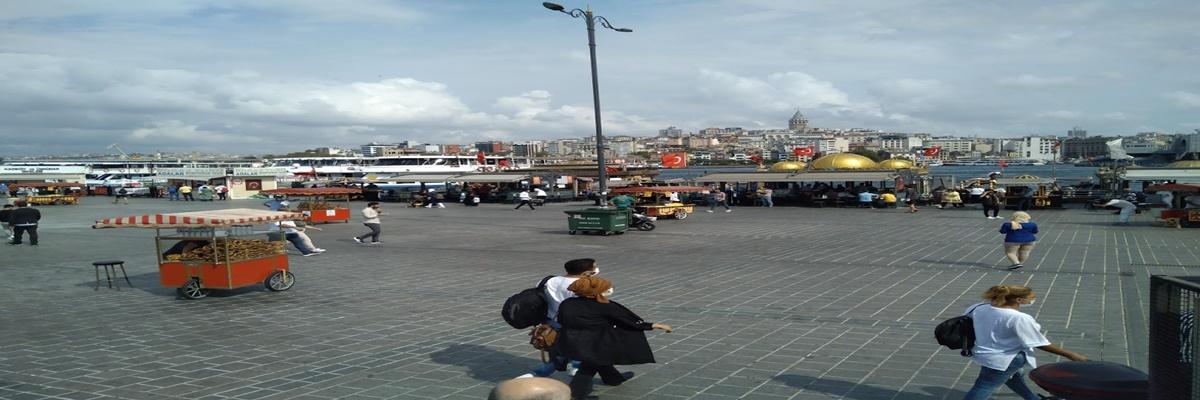Belarus
BELARUS

Belarus, officially the Republic of Belarus, is a state located in Eastern Europe. It is a former Soviet Union country that declared its independence with the dissolution of the Soviet Union in 1991. The capital of Belarus, a Slavic state, is Minsk. Its neighbors are Poland in the west, Lithuania in the northwest, Latvia in the north, Russia in the east and Ukraine in the south.
Belarus, alongside other CIS countries, is the closest ally to the Russian government. He established a "supra-state formation" with Russia called the Union State.
General Information
Official Name: Republic of Belarus
Capital: Minsk
Official Language: Belarusian and Russian
Management Type: Presidency Type Cumhuriyet
Population: 9 million 681 thousand
Area: 207.600 km²
Major Cities: Gomel, Mogilev, Bresk
Climate: temperate-black
Currency: Rubles
Phone Code: +375
Official Holidays and Festıvals
New Year January 1, Orthodox New Year January 7, Women's Day 8 March, Holy Friday (March-April), May 1 Labor Day, May 9 Victory Day, July 3 Liberation Day, November 7-October Revolution Day, December 25 Catholic Christmas Day of
Geographical Location
Belarus (Belarus) is located in the center of Eurasia, in Eastern Europe. Neighboring countries are Russia in the northeast, Lithuania and Latvia in the northwest, Ukraine in the south and Poland in the southwest. In terms of size, Belarus is the 83rd country in the world. The area of the country is 207,600 km². There are wide plains and swamps in Belarus, which has no connection to the sea.
Climate and Precipitation
Belarus, which has a very soft and humid air, has a temperate continental climate. In the southwest and south the air temperature in January ranges from + 4 ° C to -4 ° C, while in the northwest it fluctuates between -4 ° C and -8 ° C. There are frequent frosts in the country during the winter months. In summer, the average temperature in June is around + 17 ° C in the north and + 19 ° C in the south.
While the total amount of rainfall in a year falls at equal intervals, the amount of rainfall in the country reaches its maximum amount in autumn and winter. Snow depth of 1-1.2 meters is observed in the forest areas of Belarus. In other regions, snow thickness is less than in forested areas.

Population
According to the population data of the Ministry of Internal Affairs of Belarus dated April 1, 2008; 9 million 681 thousand people live in the country. There are 50 people per km² in the country. 71.1% of the population resides in cities. Population density, which increases 39% in cities and 21% in urban-type regions, is decreasing in villages. The official language of the country is Russian and Belarusian.
While people of different ethnic backgrounds live in the country, 81.2% of the population is Belarusians, 4% are Russians, 4% are Poles and 2.3% are Ukrainians. Being from the East Slavic people, Belarusians are very close to Russians and Ukrainians in terms of language and culture. There is a tight bond between Russians and Ukrainians due to the similarity of language and history. The difference of Belarus from other Soviet successor republics; It means that there is no unrest among ethnic groups living in the country. The broad educational curriculum of the schools provides the minorities living in the country to receive education in languages such as Russian, Polish, Ukrainian, Tatar, Lithuanian.
70% of the people of Belarus are Orthodox, 20% Catholic and Protestant, and 7% are Muslim, Jewish and members of other faiths. A noticeable increase has been observed in the population of the country in the last 5 years. The birth rate was 10.5 per thousand in the first three months of 2008, and the death rate was 14.7 per thousand. According to 2008 data, out-migration during the year consists of approximately 4000 people.
Administrative Departments
Belarus includes an administrative center and 6 regions (Brest, Gomel, Grodno, Mogilev, Vitebsk, Minsk). There are 102 cities and 109 city-type settlements in the country.
Minsk, the country's capital since 1919, is the country's transport, political, economic, cultural and scientific center. The city is located on the banks of the Svisloç river. 1 million 900 thousand people live in Minsk.
Gomel is the second largest city in terms of population after Minsk. Gomel, located in the southeast of the country, has a population of 501 thousand people.
The city of Mogilev with a population of 400 thousand is the third largest city of the country in terms of population density, located on the banks of the Dnieper River.
Brest city has a population of 315 thousand people. The city is located in the southwest of Belarus, on the Polish border.
State management
Belarus has adopted the democratic, social, rule of law management approach. It contains legislative, executive and judicial organs. The country's management style is a presidential type republic. The executive and the head of state is the head of state, elected every five years. The head of state is the country's representative in relations with other states and international organizations. He is also the commander-in-chief of the army.
The first presidential elections were held on 10 July 1994, won by Alexander Lukashenko. Lukashenko, who was successful in the subsequent elections in 2001 and 2006 (the country's parliament made a constitutional amendment so that Lukashenko could be re-elected), has been in office as of 2009.
The national assembly, which consists of the prime minister, ministers and representatives of other state bodies, forms the head of state and the administrative power. The legislative power in the country has a two-wing parliament. The House of Representatives is located in the lower wing of the Parliament and the Republic Senate is in the upper wing. Parliament's mandate is 4 years. While the House of Representatives consists of 110 deputies, parliamentary elections are held by secret ballot on the basis of general, free, equal, direct, universal suffrage. The Republic Senate, which consists of the administrative wing of the country, consists of 56 members. 8 members are elected from each region, and the remaining 8 members are determined by the president.
The judicial power belongs to the courts; The judicial system is formed in line with the principles of the state. Justice is provided by the sound and equality principle of the parties in the cases. Constitutional matters are under the responsibility of the Constitutional Court.

Economical situation
Belarus was one of the most developed industrial and agricultural countries among the former Soviet Union countries. Today, it makes a name for itself in production areas such as knitwear and leather shoes.
The currency of the country is the Belarusian Ruble. While the social situation of Belarus is stable, the unemployment rate is 2%. Its per capita income is around 4608 dollars as of 2007. In the first 10 months of 2008, GDP increased by 7 percent, with these figures, Belarus became the country with the highest growth rate among the CIS countries after Azerbaijan.
Due to the large forest areas, the woodworking industry has great development potential. In addition, Russia has an important place in road transport and transport in connection with its geographical location between Ukraine and Poland.
Apart from these, it has the raw material resources of potash salt, which is a very valuable product for agriculture, and exports this product to many countries of the world. The income from potash salt and refined petroleum products contributes significantly to the country's budget.
Agricultural production of Belarus is multifaceted. Approximately 1056 kg per person. It ranks first among the CIS countries with its potato production decreasing. Approximately 550 kg per person in grain production. It ranks second after Kazakhstan by quantity. Agricultural products such as flax and sugar beet are also grown. At the same time, meat and dairy farming and poultry have developed in the country.
The weakness of Belarus in the economy is that it supplies oil from abroad due to its low hydrocarbon resource. Belarus buys the oil it needs from Russia. Belarus, which had the privilege of buying oil from Russia at the Russian domestic market price until the end of 2006 and selling it to other countries at foreign market price, thus gained significant income. After the cancellation of this agreement, there was a stagnation in the country's economy.
Apart from this, iron ore and coal resources are also scarce.
In addition, healing the wounds of the Chernobyl disaster has been a major burden on the country's budget for years.
Russia ranks first among the most important foreign trade partners of Belarus. Ukraine, Lithuania and Latvia follow Russia in exports; Import countries are Germany, Ukraine and Poland. Among the most important export products, machinery, underground resources, textile are shown; Among the import products; energy and metal products.
Education
Eight-year primary education from the age of six to the age of fourteen is compulsory.
In a country with a very high literacy rate, entrance to universities is possible with separate exams held by each university. Priority is given to orphans, the disabled and victims of the Chernobyl disaster.
There are 41 higher education institutions in Belarus. These higher education institutions mainly provide education in the fields of economy, pedagogy, agriculture, transportation, technology and medicine. Apart from this, there are 12 private universities in the country that provide education in the field of economy.
Foreign students and Belarusian students who fail the entrance exam can be accepted by universities on condition that they pay a fee.
External Affairs
Looking at the foreign policy of Belarus, Russia's influence is clearly seen. During the dissolution process of the USSR and the early founding stages of the CIS, Belarus has always sided with the Russian Federation.
During the visit of Belarus President Aleksandr Lukashenko to China in December 2005, it was stated that Belarus could join the Shanghai Cooperation Organization in the near future. At the 2008 Shanghai Cooperation Organization Summit, it was decided that Belarus will soon become a member of the organization with observer status.

Belarus-Turkey Relations
After the collapse of the USSR, Belarus began to establish business partnerships with different countries. Signed on March 25, 1992, and entered into force on 1 November 1993 "Turkey-Belarus Economic Cooperation Protocol 'is one of them.
At the beginning of the Belarusian products exported to Turkey, transport, potash, artificial fibers come. The flax fabric and synthetic fiber trade has also reached a significant amount. Turkey, Belarus raw materials, chemical industry and sells products such as tobacco and boron oxide.
The development of relations between Belarus and Turkey's tourism sector is promising. With each passing year the number of tourists coming to Belarus from Russia to Turkey is increasing.
One of the important business areas in the country is the construction sector. In the construction area between Turkey and Belarus are expected to gain speed in the future cooperation.
Belarus attracts the attention of Turkish investors with its favorable geographical location and low quality workforce. In this context, the bilateral agreement on the mutual promotion and protection of investments entered into force on 20 February 1997.
There are areas in Belarus that may attract Turkish businessmen and investors. For example, agricultural products processing areas are not well developed. There is a need to establish high-tech enterprises in the processing of meat, dairy and cereal products. The fact that Belarus imports significant amounts of sunflower seeds, sunflower oil and dried legumes is an issue that Turkish producers and exporters in this field can consider. Undoubtedly, further development of political and commercial relations between the two countries will create opportunities for new formations in the banking field.
Embassy of the Republic of Belarus in Ankara; It has Honorary Consulates in Istanbul, Izmir, Adana, Antalya and Bursa. Turkey, meanwhile, has its embassy in Minsk.
The official name of the country, which is the Republic of Belarus, is Minsk. There is no coast to the sea. Industry is at the forefront of the country's economy.
40% of Belarus, where you can participate in festivals as well as discover historical textures, consists of forests.
White Russians make up 82% of the population. Official languages are Belarusian and Russian. The currency is the Belarusian ruble.
Turkey time is advanced 1 hour according to local time.
Visas are not required for visits to Belarus that do not exceed 30 days.
Most Visited Cities
Minsk, Brest, Grodno, Vitebsk
Climate / Weather
The temperature varies. The temperature, which is between 4 and 8 degrees in January, can reach 18 degrees in July.
When to Go?
Despite the cold weather, it will be more pleasant to go during the winter months. We recommend that you go prepared during these months when the snow thickness can reach 30 cm.
If you want to visit it in summer, you may encounter a rainy weather.
Country Cuisine / What to Eat What to Drink?
Vegetables, pork and bread are the most consumed foods. Their soups with plenty of ingredients are also delicious.
Popular drinks are Russian vodka and Kvass.
Belarus has no sea coast; The lands are very flat and there are many large swamp areas. According to an estimate made by the United Nations in 2005, 40% of Belarus consists of forests. There are many streams and 11,000 lakes in Belarus. Three major rivers run through the country's territory: Neman, Pripyat, and Dnieper.
Neman flows to the Baltic Sea to the west, Pripyat to the Dnieper to the east, and the Dnieper to the Black Sea to the south. It is a 90 meters high point located in. The average altitude of Belarus is 160 meters above sea level. The country's winters are harsh, with an average temperature of -6 ° C in January; in summer, the average temperature is 18 ° C and it is generally cool and humid. The annual average precipitation rate of Belarus is distributed from 550 millimeters to 700 millimeters.
Belarussian people
Between the 6th and 8th centuries, the Slavic tribes, who were the ancestors of the Belarusians from the current Ukraine and Poland, settled in these lands and over time Slavicized some of the Finno-Ugric and Baltic tribes who lived here.
Until the 19th century, there was no country or government called Belarus. Russia established the Belarusian administration as a buffer between itself and Western countries. It became independent with the dissolution of the USSR. Belarus is Russia's closest ally.
Demography
81.2% of the total population of Belarus consists of ethnic Belarusians. The next largest ethnic groups are Russians (11.4%), Poles (3.9%) and Ukrainians (2.4%). The two official languages of Belarus are Russian and Belarusian. Russian is spoken by 72% of the population and is the country's most common language; Belarusian is spoken only by 19.2% of the population. Polish, Ukrainian, and the eastern dialect of Yiddish are spoken by minorities.
Belarus has a population density of 50 per square kilometer; 71.7% of the total population lives in urban areas. 1,741,400 of 9,724,700 people living in Belarus live in Minsk, the capital and largest city of the country. With a population of 481,000, Gomel is the country's second largest city and the center of Homel Voblast. Other major cities of the country are Mogilev (365,100), Vitebsk (324,400), Grodno (314,800) and Brest (298,300).
Like many other European countries, Belarus has a negative population growth and natural growth rate. In 2007, Belarus's population declined by 0.41% and the fertility rate was 1.22, much lower than the placement rate. As of 2007, 69.7% of the Belarusian population is in the 14-64 age group; 16% are younger than 14 and 14.6% are older than 65. Its population is also aging: Although today's median age is 37, it is estimated that by 2050 the median age group of Belorussians will be between 55 and 65. There are 0.88 men in Belarus for every woman. Average life expectancy is 68.7 years (63.0 for men; 74.9 for women). More than 99% of Belarusians know how to read and write.
Historically, Belarus has been based on various religions, especially Orthodox, Catholicism and many sects of Protestantism. Large minorities also follow Judaism and other religions.
Belarus is eye-catching with its nightlife, peaceful city life, cultural texture, large parks, magnificent architecture and unique beauty historical buildings. Being one of the most frequently visited places by Turkish tourists as it is a country that can be traveled without a visa, Belarus is among the safest countries in Europe. The capital city Minsk, Gomel, Mogilyov, Grodno and Vitebsk are some of the important places you should see in this country that stands out.
Places to See in Belarus

Saint Simon and Helena Church
The Church of Saint Simon and Helena, used for cultural activities during the war, is named after Edward Woynillowicz's two deceased children, who supported the construction of the church financially. Due to the red bricks used in its construction, this place of worship, also known as the Red Brick Church, was built between 1905-1910.
Island of Tears
Tear Island, an artificial island located on the Svislac River, is connected to the Trinity District, which is famous as the historical part of the city, via a bridge. The chapel on this island, built in memory of the soldiers who lost their lives in Afghanistan between 1979-1988, is one of the most visited places on the island.
National Art Museum of Belarus
The Belarusian National Art Museum, where more than 30 thousand works, 6 different collections, as well as virtual exhibitions and various cultural and artistic events are held, has been open since 1939. This place, which has been used as an art gallery for many years and has gained the status of a museum since 1957, is located on Lenin Street.

Pecherskiy Lesopark
Pecherskiy Lesopark, a natural wonder in the city of Mogilyov, relaxes your soul with its lush green image and calmness. This park, where you can do many different activities such as nature walks, bicycle tours and canoe rides, is among the most popular places for both the public and the tourists.
Sozh River
The first thing you should do when you go to Gomel, the second largest city in the country; Watching the exquisite view of the Sozh River. This river, where you will have the chance to see the city from different angles by wandering around on rental boats, is also very attractive for photography enthusiasts and romantic couples with its romantic appearance.
